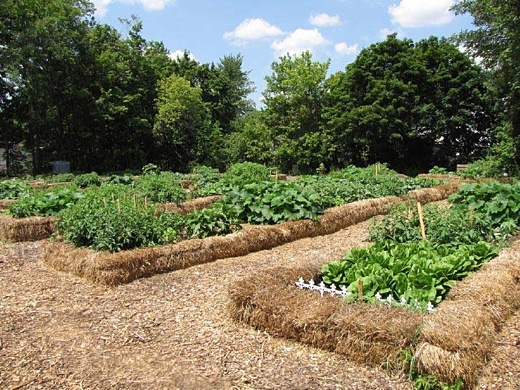 Image above: parkview Garden, on the site of torn down rowhouses in Youngstown, Ohio. Courtesy of Youngstown Neighborhood Development Corp. From (http://bettercities.net/images/13851/community-garden).
Image above: parkview Garden, on the site of torn down rowhouses in Youngstown, Ohio. Courtesy of Youngstown Neighborhood Development Corp. From (http://bettercities.net/images/13851/community-garden).
Youngstown, Ohio, has a lot of vacant land. In its manufacturing heyday, its population topped 170,000. Now less than half that number live in the city. The 73,000 or so inhabitants live among 22,000 vacant lots and buildings.
But rather than sit around and watch the grass grow in vacant lots, the citizens and leaders of Youngstown have decided to take control of what grows there. By 2010, the city had put together a plan that envisioned a future as a smaller city, but also a greener one. That foresight is paying off. The city’s website lists its recent accolades—fourth best city for raising a family, one of 20 cities recovering most strongly from the Great Recession, most affordable major housing market. And instead of growing grass in vacant lots, a bevy of community groups are growing vegetables and fruits, alongside chicken coops and fish ponds, as Global Green documents in a new report.
Part of the city’s plan has been to support urban agriculture by leasing or selling land parcels for as little as a dollar and by handing out wrenches to allow farmers access to water from fire hydrants when their rainwater collection systems run dry.
Global Green took a look at what makes the urban farms in Youngstown—and elsewhere around the country—work. While the city has its fair share of urban farms, there's room for plenty more. And based on its examination of urban farms in Youngstown and beyond, the organization whipped up a plan for the ideal way to start a new one in the Ohio city's downtown.
First, find 3 to 10 mostly contiguous acres. In Youngstown, the group found 31 vacant lots that comprised 5.5 acres, all in the Oak Hill neighborhood. They weren’t all contiguous, but they were in “several clusters of significant size.”
Next, Global Green considered the most economically efficient and profitable model for a 5.5 acre farm. The farm would need some initial investment, in resources like a truck, along with seeds and plants. Of three scenarios considered, the most profitable was one that allowed for an extended growing season.
One acre was given over to hoop houses, in which to grow tomatoes. The rest were divided among winter squash, onions, eggplant, red peppers, and spinach. Operating costs for this hypothetical farm would top $150,000, but at the end of the year, it would see a profit of $10,000—a good take for a small farm that will also provide the equivalent of three full-time jobs to the community.
There's still work to be done—soil to be tested, gear to buy—but Global Green thinks a farm like this one could become a reality, soon.
.
No comments :
Post a Comment